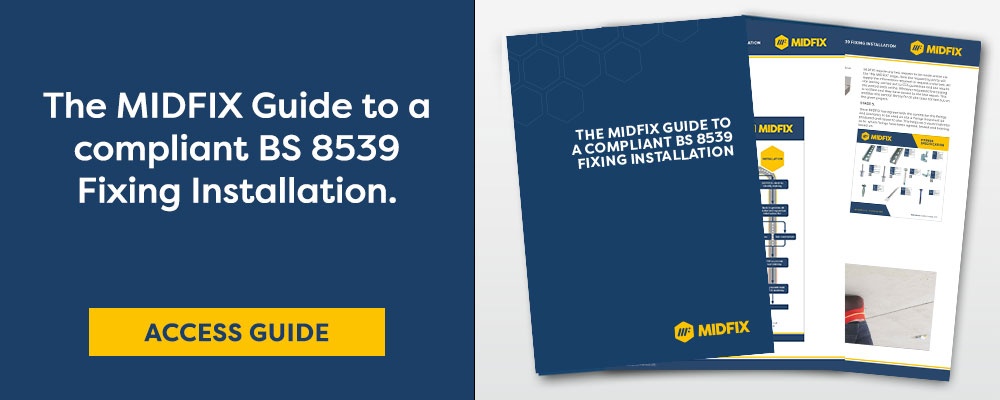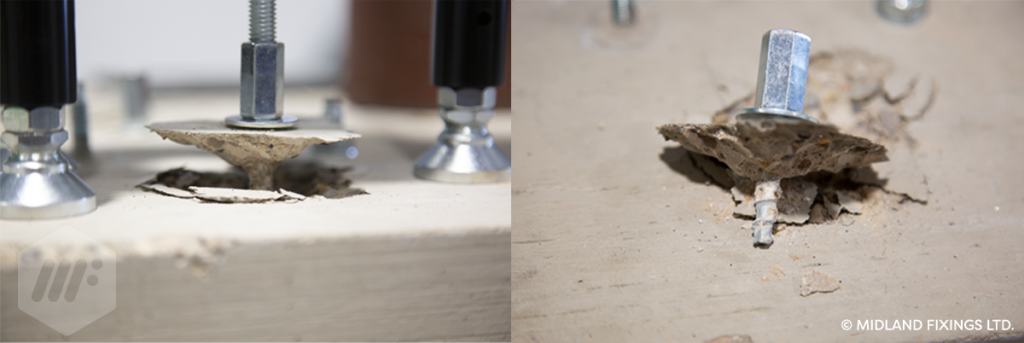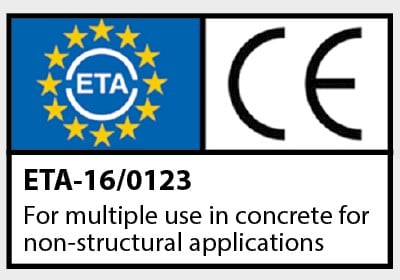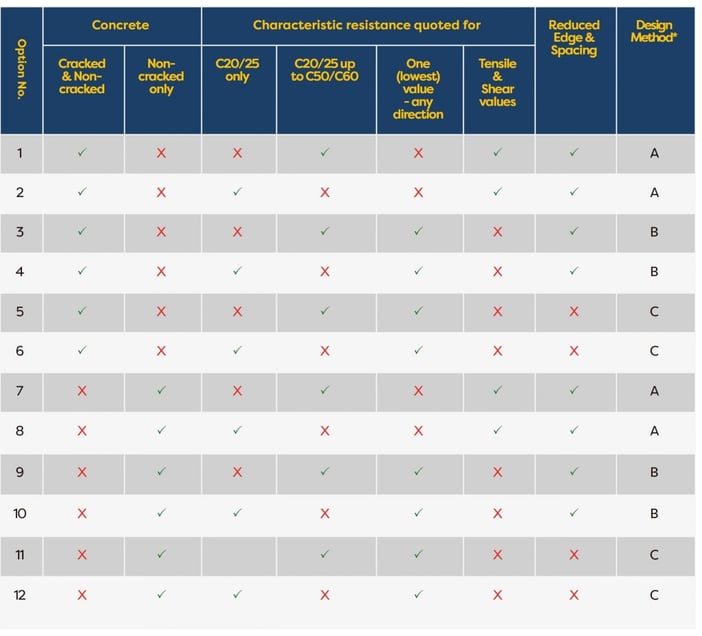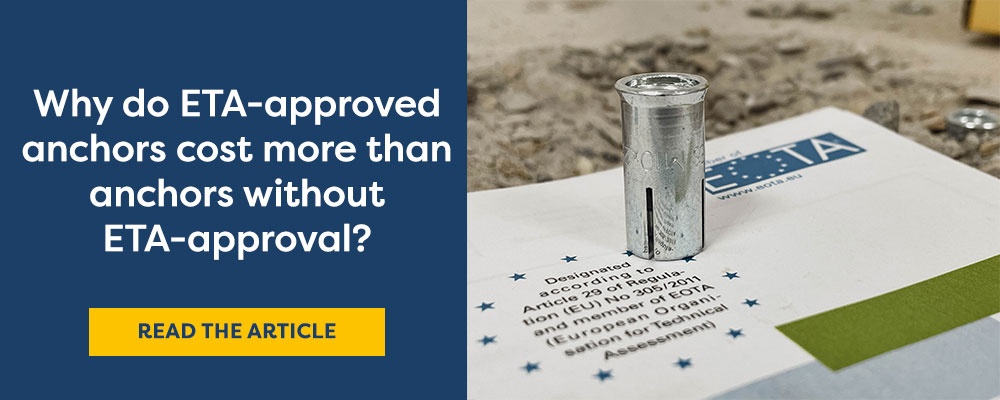The construction industry is becoming increasingly litigious with new standards and regulations encouraging best practices.
The majority of anchors and fixings supplied for an M&E installation are used to support overhead M&E services (safety-critical applications). To guarantee the performance of an anchor/fixing it is recommended that ETA-anchors are specified.
If you have not got time to read the remainder of this article then simply read our guide to a compliant BS 8539 Fixing Installation.
Outlined below are the key sections of the article simply jump to the section of your choice:
Why use an ETA-approved anchor?
What are the benefits of an ETA-approved anchor?
What are the current UK and EU standards around anchors and fixings?
Why has there been changes?
Why do anchors/fixings fail?
How are the regulations changing?
What is an ETA?
How do you select an ETA-approved anchor?
What tests are carried out on an ETA-approved anchor?
Can I trust an anchor without an ETA-approval?
Why are ETA-approved anchors more expensive than an anchor without an ETA approval?
Should I specify an ETA-Approved anchor or an anchor without approval?
Why use an ETA-approved anchor?
If an ETA-approved anchor is fixed into a known substrate and it has been installed and supervised by competent individuals then no testing is required because we know the performance of that particular anchor. If a specifier has selected an ETA-approved anchor then it is unlikely to fail.
It is highly likely that you completely agree with the reasons why ETA-approved anchors should be sourced but you are still questioning their cost. The question you would like an answer for is: why do they cost so much more than anchors without an ETA approval?
What are the benefits of an ETA-approved anchor?
- From a litigious and compliance perspective, the construction product regulations (CPR) states that where failure of an anchor would lead to an injury or significant material or economic damage then it is deemed ‘safety critical’. Anchors/fixing installed into overhead M&E services fall under this category.
- The British standard BS 8539 advice that where an ETA-approved anchor is available for the specific application then it must be specified.
- As an ETA-approved anchor undergoes a complex testing programme against defined harmonised testing standards it can determine the quality and suitability for use in an application making it simple for the specifier to select.
- If an ETA anchor is specified and installed correctly into the approved application, it demonstrates that all parties have carried out the necessary due diligence to reduce the risk of suspension failure.
- Manufacturers of deformation-controlled anchors will usually have an indentation mark on them (referred to as a witness mark) by simply undoing the rod an auditor can see if it has been installed correctly.
- All parties to the construction process can be confident in the long-term security of the fixings.
- With an ETA-approved anchor you have identifiable and traceable performance characteristics to show that it is fit for purpose.
- No site testing is required where the manufacturer provides data for the substrate in question and the installation is undertaken by competent operatives under supervision.
What are the current UK and European standards?
There are UK and European standards and regulations. In the UK we have the Construction Product Regulations and industry standards - British Standard BS 8539:2012 Code of Practice created by the Construction Fixing Association and from Europe the ETA (European Technical Assessments).
The CPR (Construction Product Regulations) requires that all anchors offered for use in 'safety-critical applications' are suitably approved. These approvals are called 'European Technical Assessments' and are awarded after the anchor has undergone rigorous testing. The CPR states that an anchor is safety-critical if the failure of the anchor could lead to injury or significant material or economic damage to the building. ETA Approved Anchors will display the approval, carry the CE mark and have the manufacturer's 'Declaration of performance', which is a guarantee of the loads they will take. A better understanding of the regulations, standards and ETA approvals is the best way to mitigate the risk of anchor/fixing failure.
Why has there been a change?
In the recent past, there have been a series of high-profile anchor failures resulting in serious injury or fatalities. For example, a series of concrete panels fell from the roof of a tunnel in Boston sadly killing a passenger driving beneath.
The Construction Fixing Association have also highlighted a few high-profile anchor failures -
CFA Case Study 1
CFA Case Study 2
Within the M&E industry, it is believed that up to 80% of drop-in anchors are installed incorrectly
Why do anchors fail:
- An anchor has not been selected correctly
- Breaking specification, the intended anchor did not arrive on-site
- The person responsible for installing an anchor has not been trained correctly and therefore the anchor has not been correctly installed
An anchor will likely fail in the following ways:
- The anchor has been installed too close to edge causing cracking in the substrate
- The finish of the anchor is not suitable for its environment which can cause failure
- The anchor has not been set correctly (with the right setting tools specific to that anchor)
How are regulations changing?
After a particular fatality in Ireland, the Irish Health and Safety association introduced a 'code of practice for the design and installation of anchors' this standard was updated by the CFA into the BS 8539:2012 Code of Practice.
BS8539:2012 Code of Practice for post-installed anchors used in concrete and masonry is aimed at all the stakeholders within the supply chain. BS8539:2012 provides guidance on the selection, supply, installation and testing of anchors to mitigate the risk of anchor failure.
One of the main highlight from BS 8539:2012 is the recommendation of selecting an ETA-approved anchor if available. The guidelines also state that all safety-critical fixings should have an ETA relevant to the application they are fixed into.
What is an ETA?
As described by CFA "The ETA (European Technical Assessment) is an independent confirmation of the performance of the product to the essential characteristics as defined by the EAD". It is a harmonised independent set of tests and standards, that tests anchors in different substrates and various loads. To achieve an ETA, a product must undergo a complex testing program against defined testing criteria to determine its suitability for use in the specified application.
The ETA certifies the quality, suitability, and performance of an anchor and is the basis for the product being awarded the CE mark. It defines the anchor, the intended use of the anchor, the materials it can be used in, and how it is installed. For further guidance see the CFA tool kit.
An ETA-approved anchor will be labeled and will have an option number. ETA's are divided into 12 options that confirm the parameters that they are approved for, for example, an ETA-02/0020 is an anchor approval for use in non-cracked concrete. From a specifier perspective, it is important to know that every ETA number correlates to a report which will confirm its validity within an application ensuring the correct anchor is specified.
How do you select an ETA anchor?
Sequence Diagram for the selection of anchors with most appropriate ETAG for use in concrete
Source: CFA guidance notes
What tests are carried out on an ETA Approved Anchor?
- Over-torque the anchor
- Fixing it close to the edge
- Testing anchors on various different substrates
- Undersized or oversized holes
- A specific substrate test can be carried out, matching the on-site application
Can I trust an anchor that does not have an ETA approval?
Unfortunately, there is no definitive answer to this, because you are not relying on an independent third party. There is quite frankly no way that you can recreate the level of testing that an ETA carries out. ETA's should be adhered to by all reputable anchor manufacturers.
Anchor/Fixing specification tends to be left until installers/engineers request them on site. In these types of scenarios, it is left up to the buyer team to follow the guidance and select an appropriate anchor/fixing. This can put untold pressure on the buyer team as their focus is on the commercial side rather than compliance.
Why are ETA-approved anchors more expensive than an anchor without an ETA approval?
This will always be one of the first questions any M&E contractor will ask when researching their anchor/fixings options.
After reaching out to a leading European anchor/fixing manufacturer and asking the question: what does it cost to develop an anchor/fixings and getting the ETA approval we received the following answer:
“It is difficult to determine but what I can say is that the cost for the development of an anchor, for getting the approval and also maintaining and improving it costs more than one million Euros”.
Although an ETA-approved anchor is more expensive than an anchor without approval, it can guarantee its performance, is easily identifiable on-site, and comes with clear instructions putting the installer in the best possible position to install them correctly.
Anchors are a small component to which little consideration is frequently given but are absolutely vital to preventing the collapse of the structure or installation that depends on them. This is why when an ETA approved anchor is selected you can say with certainty that the anchor is fit for purpose.
Should I specify an ETA-Approved anchor or an anchor without approval?
This question is dependent on a number of factors:
- Budget
- The allocated time to select an anchor/fixing.
- Whether you are following a fixing policy.
Overall, specifying and correctly installing an ETA-approved anchor for the approved application can guarantee its performance and reduce the risk of a site failure. Moving forward, as legislation tightens around the sector, it will be the responsibility of the specifier to guarantee that the anchors/fixings selected and delivered on-site have the performance data to prove it is fit for purpose.



